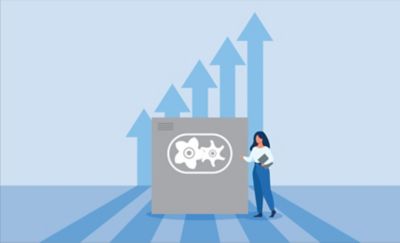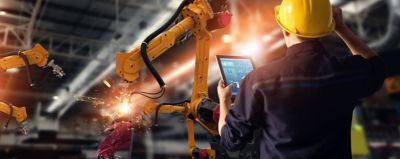An air compressor is a machine that intakes the ambient air through valves and it compresses it internally. The released compressed air powers other machines and tools within the production system.
Fueled with oil or powered by electricity, air compressors vary in several aspects. The main ones consist of dimensions, technologies, and applications. You can choose between a wide range, that goes from portable and small compressors to huge machines powering the large-scale production companies. It all depends on your needs and on how you want to use them.
Different types of air compressors
Basing on the technology applied to produce compressed air, we can identify two main categories of compressors: screw air compressors and pistons air compressors.
- Screw air compressors use a helicoidal system to pressurize the ambient air.
- Piston compressors, which offer a wider range of dimensions, are based on two pistons to compress air in an internal cylinder.
Regardless the screw or piston’s working principle, compressors are available also in the oil-free or lubricated version. In lubricated compressor oil is used to make the machine work properly as well as to avoid overheating. Instead, oil-free compressors eliminate any possible oil contamination of the air. Oil-free compressors are designed for those industries that need products of high quality, such as pharmaceutical and food and beverage ones.
Tips to a safe usage of air compressor and the entire equipment to produce compressed air
Even if switching the compressor on and off is very simple and the connection system, such as ICONS and Econtrol6, facilitates the usage of these machines, air compressors are really complex and the incorrect usage can cause damage to you and your employees. Here we provide you with ten simple rules to follow when you utilize any tool to produce compressed air.
- First and furthermore, be sure that each of you wears protective equipment, such as ear protection, safety glasses and gloves for your hands.
- Ensure that all connections and coupling are secure and hold hoses in a firm way to avoid them falling directly on your feet.
- As hoses are not used, do not leave them on the floor. They can be hung on a proper hose reel on the wall or laid on a table.
- If you use an air nozzle to clean tools and remove dust from hard-to-reach places, make sure that the air exits at the lower pressure possible.
- Never point the air nozzle at the very end of hoses against anyone.
- Ensure air receivers with pressure measurements and valves at the bottom, to keep the pressure inside under control.
- Never ever utilize compressed air on flammable liquids or nearby.
- Make sure to buy tanks and valves built according to regulations and suitable for your compressor.
- Always operate maintenance on your stable or portable compressor regularly. Ensure that the maintenance is executed by technicians and follow their instructions. Thanks to connections’ systems and controllers installed on different machines, maintenance services can be scheduled well in advance.
- Always control that all tools are switched off and all pressure has been released before proceeding with any repair on the pressure system.
Get in touch with our expert
To maintain the working place safe and pleasant, always follow the rules and safety protocol for the correct usage of your compressor. To proceed with the right maintenance and to get more information about all types of compressors, have a look at our website and put yourself in contact with an expert.
Get tailored advice
Still have questions after reading? Our expert is ready to help you make sense of it all and guide you to the best solution.
Write to an Expert Today – Get the answers you need.






